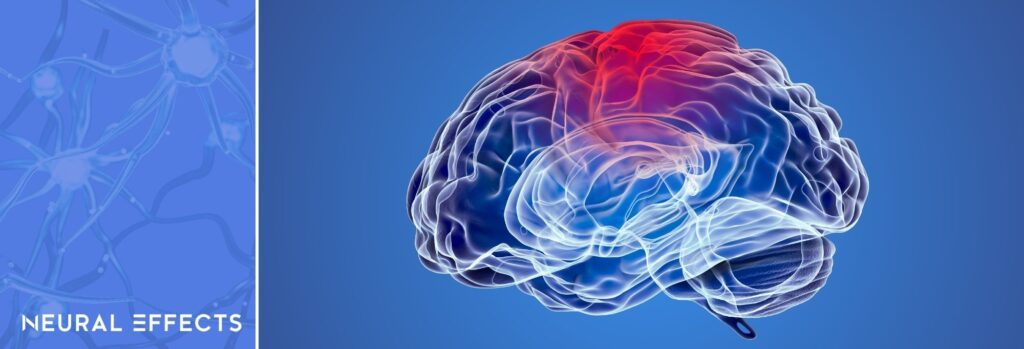While concussion recovery times vary from person to person, there are practical steps you can take to speed up your recovery time. For example, recovery requires rest, but how you rest matters: Lying in a dark room with no activity can actually slow down your recovery. Conversely, going back to normal too quickly can also set you back.
Fortunately, there are many steps you can take to facilitate a smoother recovery from concussion. We’ll cover:
- How much to rest
- How to avoid overexertion
- How to exercise safely after a concussion
- What types of cognitive activities are safe & beneficial
- Which foods to eat to help your brain
- How to get enough sleep
- How to get enough socialization
- What to know about post-concussion medication
- Where to get reliable concussion treatment to speed recovery (and reduce the chance of experiencing long-term symptoms)
We’ll also go into more detail about what concussion treatment at Neural Effects is like.
If you live in Provo, Salt Lake City, or anywhere else in the Utah Valley area, we can help you actively recover from your concussion. We are in network for most types of medical insurance. Schedule your evaluation today.
1. Rest (But Not Too Much)

It’s important to have a period of rest after a mild traumatic brain injury (mTBI) — aka concussion — to allow the brain to begin the process of healing. The current guidelines from the Centers for Disease Control and Prevention (CDC) recommend 24–48 hours of rest after a head injury.
This 48-hour rest period doesn’t mean you have to lie down in a dark room and do nothing. The aim is to refrain from activities that may worsen symptoms, such as going to busy and crowded places, working, or listening to loud music. You’re still encouraged to engage in gentle activities at home. This may include listening to quiet music, sitting in the garden, or completing simple tasks such as setting the table, for example. During this rest period, it’s highly advisable to stay home from work and/or school. If your home is busy and stressful, spend the majority of your time in a quieter part of the house.
The key to this rest period is to keep it short. Extended periods of inactivity can trigger ongoing issues, like anxiety or depression, chronic fatigue, social isolation, sleep disturbances, and physical deconditioning. Prolonged rest time may even delay healing and recovery after a concussion.
While it’s good to treat a concussion as a serious injury, it simply doesn’t require more than two days of complete rest. If your doctor prescribes absolute rest in a dark room until symptoms subside (a practice known as cocooning), seek a second opinion. Cocooning has been shown to delay recovery and potentially increase symptoms.
Evidence shows that the brain likes stimulation and recovers faster when patients engage in physical and cognitive activities shortly after a concussion. For example, a study showed that patients who engaged in physical activity within the first few days after a concussion had fewer symptoms 28 days later compared to those who didn’t.
It’s good to ease back into normal activities when these two days of rest are complete. For example, it might be fine to play 30 minutes of a video game after the two-day rest period as long as it doesn’t trigger vertigo or severe headaches.
2. Avoid Overexertion During Recovery
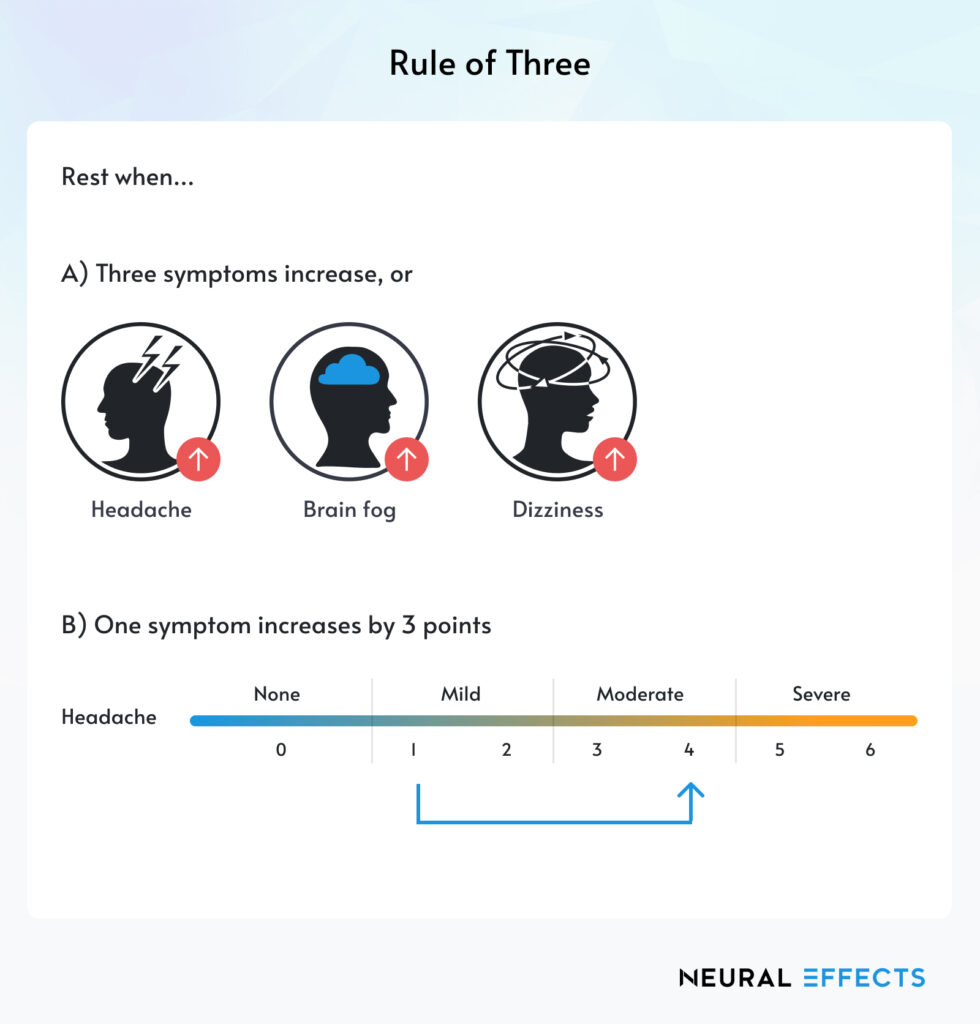
After the initial period of rest, it’s essential to start exercising your body and your brain to help it return to normal. However, increasing your physical or cognitive load too quickly could set your recovery back. If you overexert yourself, you’re more likely to feel tired and crash. For example, a study found that high school athletes who started high levels of activity shortly after their concussion performed worse on cognitive activities than those who engaged in mild to moderate levels at first.
The trick for this is to listen to your body. If you’re going about your daily activities and you feel your symptoms increasing, your body is telling you that you may need a break. If you’re not sure when to take a break, use the rule of three:
- If you notice three symptoms worsening (such as brain fog, headache, and dizziness), then it’s time to take a break.
- If the severity of a single symptom increases by three on a six-point scale (for example, your headache increases from a 1 to a 4), then it’s time to stop.
If you’re just experiencing one or two very mild symptoms — such as your vision is a bit blurred and your brain feels vaguely foggy — then it’s safe to continue. In fact, pushing yourself just enough to experience mild symptoms (but no further) is exactly the right amount of effort to help your brain to recover faster. Just make sure that you take plenty of breaks, even when you’ve only had mild symptoms.
Cognitive FX, a post-concussion syndrome treatment clinic, has a great resource on how to rest your brain after a concussion. It walks through healthy rest ideas, such as meditation, power naps, daydreaming, art, and more.
Here are a few more practical tips to help you find the balance between activity and rest as you recover:
- Organize your day in such a way that you’re doing the most challenging tasks when you feel rested and have the most energy. If you have more energy in the morning, then do the hardest task at this time. If you work better after lunch, opt for something lighter before.
- Alternate between physical tasks (like taking out the trash or folding the laundry) and cognitive tasks (like reading or using the computer). This will help increase the amount of time you can be productive before needing a break because you’re working different parts of the brain to complete these tasks.
- Make time in your day to do something that you enjoy and which usually gives you energy. For example, you might go on a quiet walk when the weather is nice or meet a friend for a leisurely chat.
3. Engage in Regular Exercise
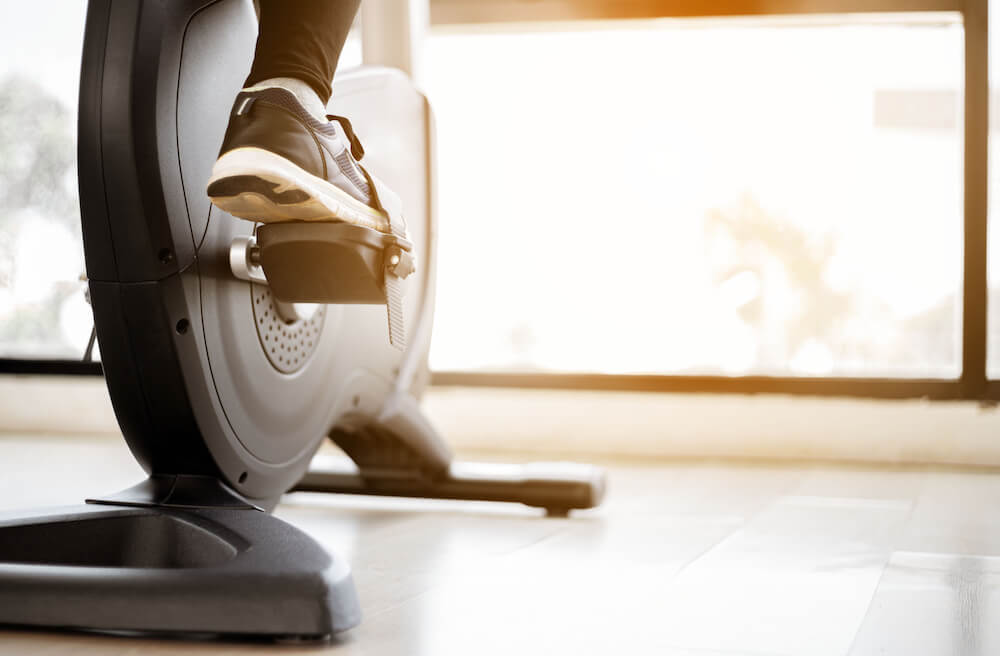
After the initial rest period, engaging in physical exercise helps your brain heal faster. Physical activity increases blood flow to the brain and promotes the release of important neurochemicals. One of these chemicals is called brain-derived neurotrophic factor (BDNF). BDNF enhances cognitive function and improves communication within the brain, making it a helpful contributor to your recovery.
You still need to be careful when you return to exercise after a concussion. Some patients experience headaches, dizziness, fatigue, nausea, and brain fog when they attempt to exercise. This is known as exercise intolerance, and it can happen when you’re exercising or a few hours afterward.
If you’re in this situation, it can be very helpful to find an athletic trainer or physical therapist with experience in post-concussion rehabilitation (which we’ll discuss more under point #9). Besides that, here are some tips to exercise safely even if you have some common symptoms of exercise intolerance:
- Avoid activities that may cause your head to jolt, such as jogging or plyometrics.
- Opt for exercises that increase your heart rate without dramatically increasing your symptoms. Biking on a stationary bike and swimming are often good choices. Going for a walk can still be helpful, though it’s good to punctuate it with brief, intense exercise to spike your heart rate. You can also try strength or flexibility training as long as it’s intense enough to still raise the heart rate slightly.
- Exercise for as long as you can tolerate. Even if you can only do it for five minutes, it’s still worth it. In time, you can increase how long you exercise.
- Give intervals a try: 30 seconds of intense cardio, followed by two minutes of controlled breathing. If this period of rest isn’t long enough to bring your heart rate back down, wait a bit longer before you do another round of cardio. As you improve, you will be able to manage longer cardio with shorter recovery times in between. Intervals are an excellent way to circumvent exercise intolerance. Just make sure to follow the Rule of 3 in determining how much you can tolerate.
4. Challenge the Brain with Cognitive Activities

In addition to exercise, activities designed specifically to promote cognitive skills — such as memory, thinking, problem-solving, and decision-making — can also boost your recovery. These activities help your brain re-establish healthy internal communication.
To make the most of your cognitive activity, consider the following practices:
- Start with a short session of aerobic exercise to get your heart rate up. See the section above for advice on how to exercise safely.
- After exercise, play cognitive games, ideally with a friend to help you if you get stuck. Use different games and activities to promote different cognitive skills. Cognitive skills are not transferable, which means playing memory games helps with memory but it’s not going to help with problem-solving skills.
- When you’re engaged in these cognitive activities, find a place where you won’t be distracted. For example, turn the television off and silence your phone so that you can focus fully on your activity.
- Be consistent, and engage in cognitive activities on a regular basis.
- Keep challenging yourself. When you feel comfortable with a certain level, it’s time to take it up to the next level.
You can find some ideas for cognitive exercises in an article published by our sister company, Cognitive FX. The list includes 17 cognitive exercises that can easily be done at home with no special equipment needed. There are also numerous apps available now that you can use for cognitive games, such as Elevate and Lumosity. Just make sure that you don’t exclusively choose brain games on your phone or computer since it’s helpful to do some of these exercises without the presence of a screen.
If you’re a student, schoolwork can also be included in cognitive exercise. Just make sure to mix it up with non-school cognitive exercises designed to challenge different parts of the brain.
5. Follow a Healthy Diet with Foods That Help Your Brain
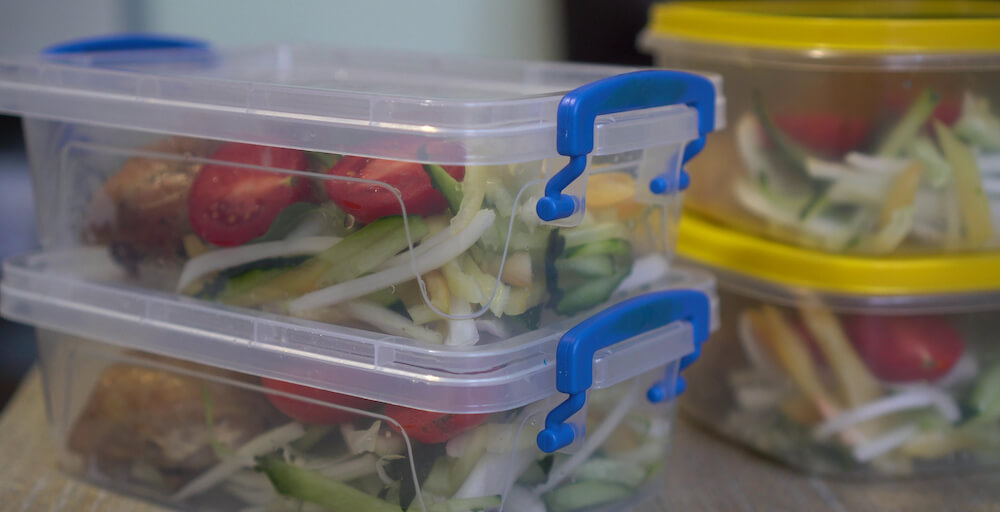
To promote a speedy recovery after a concussion and help your brain heal, do what you can to follow a healthy and balanced diet.
Here are some considerations:
- Water: It’s essential to drink plenty of water and keep hydrated at all times. Water helps your body absorb other nutrients, promotes blood flow around the body, and helps you feel focused and alert.
- Proteins: Protein-rich foods include meat, fish, eggs, and beans. Proteins supply the brain with amino acids, which are then used as building blocks for neurotransmitters and other important compounds in the brain.
- Lipids: You don’t need too much, but a certain amount of fats and oils help the nervous system and promote cognitive function. Healthy sources include fish (rich in omega-3 fatty acids), avocados, olive oil, and nuts.
- Carbohydrates: Our recommendation is to get your carbs mainly from fresh fruit and whole grains. Both can supply the brain with a steady source of sugar, are packed with vitamins and antioxidants, and are a good source of fiber.
- Antioxidants, Vitamins, and Minerals: You need these in small amounts, but they help with crucial functions in the body. Eating a diet rich in fresh fruits and vegetables is a good way to get these nutrients. Sea salt that still has minerals in it is helpful, too. Over-the-counter vitamins can help offset any deficiencies in your diet.
- Foods to avoid: To maximize your chances of recovery, we recommend that you avoid fatty, sugary, and processed foods, as well as alcohol and caffeine.
If you live in Provo, Salt Lake City, or anywhere else in the Utah Valley area, we can help you actively recover from your concussion. We are in network for most types of medical insurance. Schedule your evaluation today.
6. Get Enough Sleep
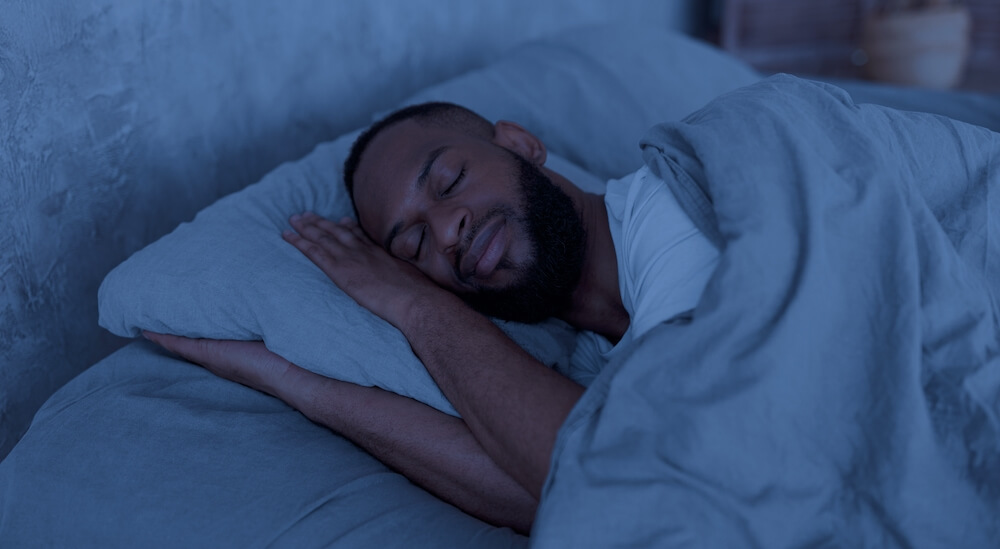
A good night’s sleep is crucial to speed up your recovery after a mild TBI. Sleep helps the brain learn new skills and strengthens cognitive functions, especially memory and attention. The problem is that many concussion patients experience sleep problems, such as trouble falling asleep, waking up during the night, or feeling sleepy during the day.
If you’re struggling to sleep, try these tips:
- Maintain a regular sleep schedule (i.e., go to bed and get up at the same time each day, even on weekends and holidays). This consistency may be uncomfortable at first, but it can help tremendously with getting a good night’s sleep.
- Relax before bed with quiet activities, like stretching or listening to relaxing music.
- Keep your bedroom dark, cool, and quiet. This will promote restful sleep.
- Don’t use electronics or bright lights for at least an hour before going to sleep.
- If possible, avoid naps during the day. If you do need a nap, keep it to 20–30 minutes, ideally early in the afternoon.
- Don’t drink caffeinated drinks or alcohol before going to bed.
- Try melatonin. Start with a small dose (such as 0.5 mg) and gradually increase until you find the right amount for you. Adults can take up to 5 mg daily.
If none of these tips help, and you’ve experienced several weeks of poor sleep, you may need medical attention. Your doctor might approve the short-term use of sleep medication while you get to the root of the issue. Your healthcare provider may order an MRI, CT scan, and/or sleep study while investigating. If you go three months without any improvement, and you’re still having other post-concussion symptoms, consider a post-concussion syndrome specialist like Cognitive FX.
7. Maintain an Active Social Life

It’s important to maintain an active social life after your brain injury. Social isolation may lead to feelings of depression and anxiety. However, a brain injury can make socializing somewhat challenging. Noisy environments can be overwhelming, and you might have difficulty processing and relaying information, which often leads to slowed speech and poor communication skills.
Not surprisingly, many post-concussion patients are less willing to see their friends, and it’s harder for them to enjoy social activities. However, with the right support, it’s still possible to have a fulfilling social life while recovering from a concussion.
Here are some ways to include socialization in your recovery routine:
- Meet friends and family members in a quiet environment, such as a small cafe or someone’s house. It helps if you don’t have to deal with loud music or other people’s chatter to hear the conversation.
- Meet with only a few friends or even just one person at a time. Don’t engage in large gatherings, at least at first.
- Keep meetings short and light. Make sure your friends understand that you may not be able to stay for long or have complicated discussions.
- If meeting your friends in person isn’t an option, maintain contact by text messages or video calls. This way, you can control when and how to engage and still stay socially active. Just make sure to monitor your symptoms and keep calls short if the screen time or speakerphone triggers overstimulation.
8. Make Smart Choices Regarding Medication

At the moment, there are no medicines that can treat concussions. Instead, doctors prescribe meds to address specific symptoms, such as painkillers or migraine meds for headaches or sleeping pills to treat sleep problems. The problem is that as long as the underlying issues go untreated, symptoms may improve slightly with meds, but they won’t go away completely.
Be cautious about using medication to address concussion symptoms because:
- They mask concussion symptoms: As we’ve seen above, one of the ways you can assess if you’re overdoing it is by how severe your symptoms are. However, regular use of meds mask these symptoms, which means you’re more likely to overexert yourself and delay recovery. Our advice is to use meds only if the symptom is unbearable or prevents you from doing something you need to do. If your symptoms are mild, and you can cope without it, it’s better to avoid medication so you can monitor your improvement.
- They’re not effective: Multiple studies found limited evidence that medications can consistently help concussion patients. This is true of medications ranging from over-the-counter non-steroidal anti-inflammatory drugs (NSAIDs) and acetaminophen to more specific analgesics, such as lidocaine and opioids.
- They cause unwanted side effects: Many of the meds routinely used by concussion patients can cause unpleasant side effects. For example, one study showed that about 25% of patients experienced side effects, including heart palpitations and irritability, after taking amitriptyline to treat headaches. Other common side effects included abdominal pain, nausea, diarrhea, blurred vision, and skin rashes.
- They could cause further health issues: In addition to causing side effects, many meds could cause new medical issues. For example, excessive use of over-the-counter pain relief — such as Advil (ibuprofen), Tylenol (acetaminophen), and aspirin — may actually worsen symptoms and cause rebound headaches. In addition, some meds can cause gastrointestinal problems, heart failure, and strokes.
This isn’t to say that you can’t turn to a Tylenol or two to help yourself get through the worst symptom days, but it is to say that you should consider your options carefully and pay attention to how you feel. Most medications are less helpful than you might hope.
9. Seek Reliable Treatment to Speed Recovery and Reduce the Chance of Long-term Symptoms
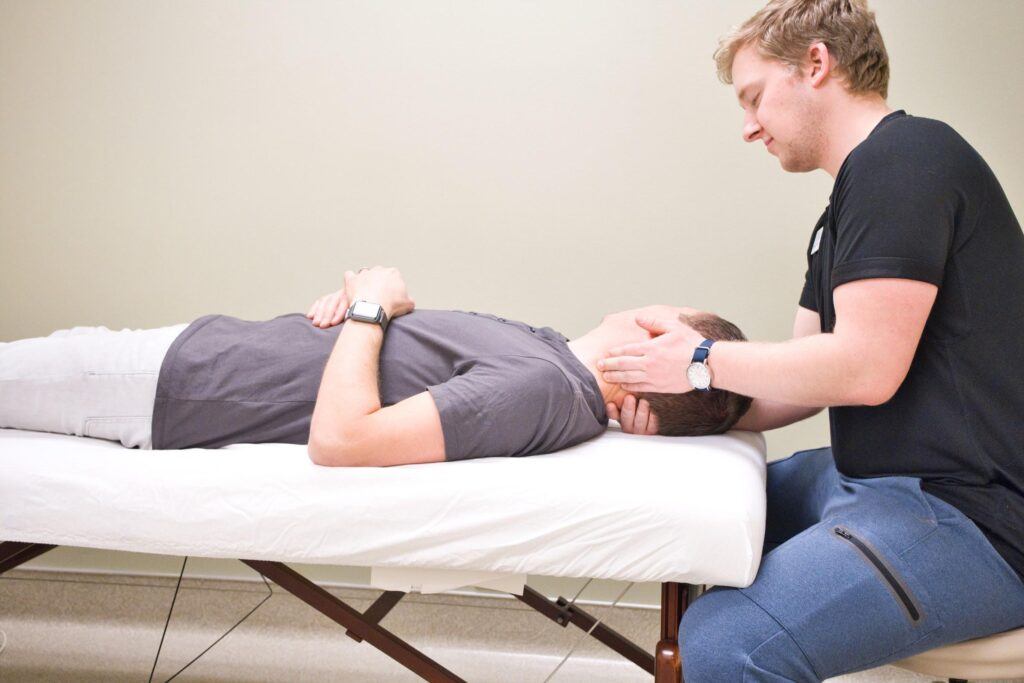
If you’ve suffered a concussion and are concerned about it, our best advice is to seek medical care. The best place to get this type of assistance is in a concussion clinic such as Neural Effects. Getting an early diagnosis and the right treatment gives you the best chance of a speedy recovery.
Instead of relying on rest or medication, at Neural Effects, we provide an active rehabilitation pathway to speed up your recovery and get you back to your normal life as soon as possible. This method relies on:
- Targeted cognitive activities: These include activities specifically designed to treat cognitive issues most affected by a concussion, such as memory problems, difficulty making decisions, and problems concentrating, to name just a few.
- Sub-symptom-threshold exercise: Patients exercise at an intensity level that does not increase symptoms substantially but still reaps BDNF’s benefits in terms of memory and learning. (See previous section about exercise.) Multiple studies show exercising below the symptom threshold is safer and more effective than rest at helping patients recover from a concussion.
Treatment at Neural Effects

Finding the right balance between doing too much and not doing enough can be tricky on your own. If you’re worried about your condition, our therapists are here to help you find the right approach to speed up your recovery process. The healthcare professionals on our team can assess a suspected concussion and offer appropriate treatment.
The best time to start treatment is right after the 48-hour rest period, but you can start at any time after the concussion. We offer immediate concussion treatment after evaluation. Typically, your first appointment will be on the same day as or the day after your evaluation. Most patients come for three one-hour sessions over two weeks, but we can adjust the schedule or provide additional follow-up based on your specific needs.
Before treatment, all patients undergo a detailed physical examination and assessment of concussion symptoms. This assessment includes a cranial nerve exam to assess nerves in the head that control facial movements; a cervical spine exam to check for fractures or herniated discs; and a balance exam — called Balance Error Scoring System (BESS) — to test balance and posture.
In addition, we ask our patients to list and rate their symptoms from zero (no symptoms) to six (most severe symptoms) using a symptom questionnaire. Finally, we review the patient’s medical history and any referral paperwork or brain imaging results.
After this exam, our team deploys several useful therapy types:
- Physical therapy: Treatment starts with short bursts of aerobic exercises, usually on a stationary bike or treadmill. One of our therapists will monitor you the whole time and will adapt the exercises to suit your abilities.
- Cognitive therapy: Patients engage in a series of cognitive exercises, such as logic puzzles, memory games, and visual search puzzles. These exercises aim to improve cognitive deficits, such as memory loss, brain fog, and difficulty concentrating.
- Vestibular therapy: This type of therapy helps patients who are struggling with symptoms such as dizziness, lightheadedness, difficulty balancing, or unstable vision.
- Vision therapy: This therapy is used to address symptoms related to vision, such as eye strain, blurry vision, or headaches when reading.
- Neuromuscular therapy: Patients receive a neck massage and engage in therapeutic exercises to relieve muscle pain caused by trigger points, muscle soreness, and other problems.
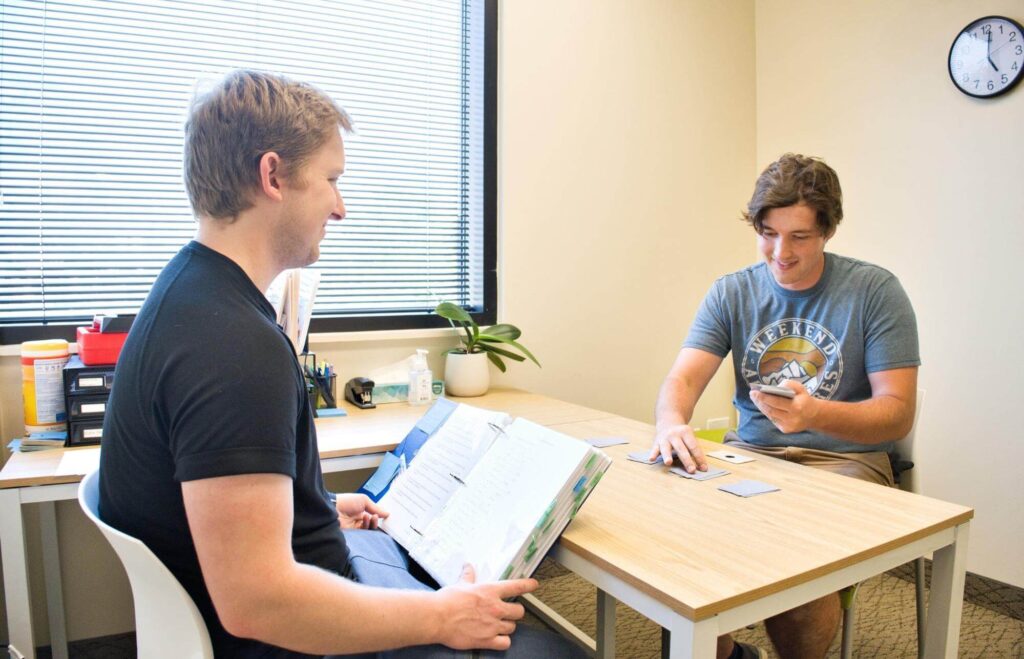
When combined, these therapies have a powerful restorative effect on brain function and lead to greatly reduced symptoms of a concussion. These therapies are also appropriate for whiplash recovery.
Once each session is completed, patients meet with one of our therapists to discuss progress and receive a series of exercises to complete at home. Typically, this includes aerobic exercises, cognitive activities, and relaxation techniques. Completing these exercises increases your chances of a fast recovery.
Want to get started? Schedule an appointment now.
Finally, a Warning: Avoid Scenarios That Could Cause Another Concussion While You Recover
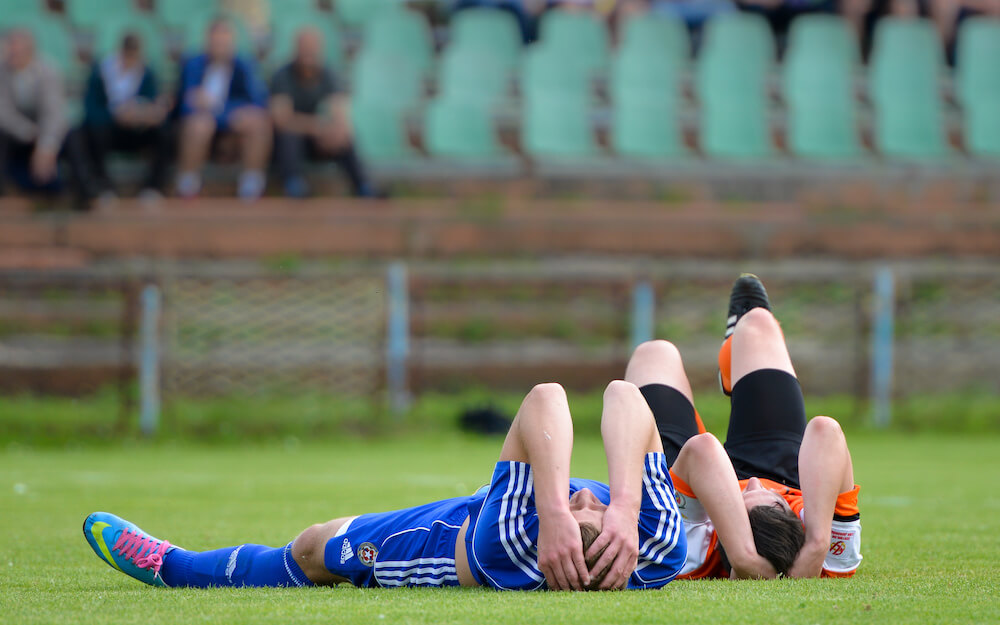
It almost goes without saying, but if you want to recover faster from your concussion, don’t put yourself at risk of a second concussion before your brain has had the chance to heal from the first one. While not all scenarios can be avoided (a car accident or fall can happen to all of us), take what steps you can to reduce your risk of injury for the first week after your concussion. A second injury will prolong your recovery and could even prove fatal.
Sustaining a second concussion before the first is healed can result in Second Impact Syndrome (SIS). SIS is a rare but life-threatening condition that can develop even after a seemingly “mild” second concussion. With SIS, the brain starts to swell and patients deteriorate rapidly with loss of consciousness, loss of eye movement, dilated pupils, and then respiratory failure. This can all happen within a few minutes. SIS requires immediate medical treatment, and anyone showing possible signs of SIS should be rushed to the emergency room.
Not every second concussion develops into SIS (in fact, most don’t). But it’s important to know the potential consequences of engaging in sports and other risky activities while you’re on the mend. Keep in mind that contact sports aren’t the only ones to cause a concussion — sports from skiing to volleyball to soccer have non-negligible concussion rates. A common symptom of concussion is poor impulse control, so make sure you take such activities firmly off the table while you’re recovering.
If you regularly play sports, there are safe ways to slowly reintroduce participation without introducing unneeded risk. You can learn more from the HEADS UP program: Return to Play protocol.
You can also read our guide to sports concussion recovery.
Sports-related concussions are often faster to heal, but only when the athlete is committed to a safe re-entry to play. Sports medicine professionals can help you maintain fitness while minimizing the risk of injury and accommodating symptoms.
If you live in Provo, Salt Lake City or anywhere else in the Utah Valley area, we can help you actively recover from your concussion. We are in network for most types of medical insurance. Schedule your evaluation today.
